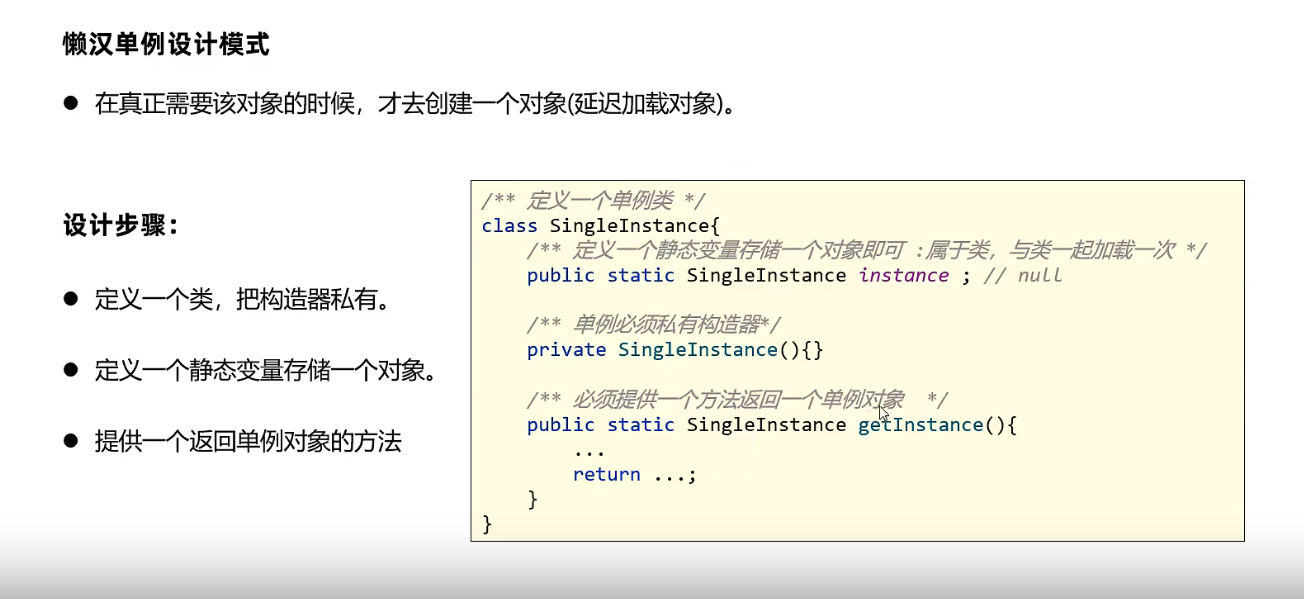
package com.itheima.d4_static_singleinstance;public class Test2 { public static void main(String[] args) { // 目标:掌握懒汉单例的设计。理解其思想// SingleInstance2 s1 = SingleInstance2.instance;// 默认值为null// SingleInstance2 s2 = SingleInstance2.instance; // null// System.out.println(s1);// System.out.println(s2); // 这个时候已经产生了对象 System.out.println(SingleInstance2.getInstance()); // 将创建的对象用变量存起来 SingleInstance2 s1 = SingleInstance2.getInstance(); SingleInstance2 s2 = SingleInstance2.getInstance(); System.out.println(s1 == s2); // 为true代表实现了懒汉单例 }}
package com.itheima.d4_static_singleinstance;/** * 懒汉单例 */public class SingleInstance2 { /** * 2.定义一个静态的成员负责存储一个对象 * 只加载一次,只有一份 * 注意:最好将成员私有化,因为一开始的默认值为null,被别人调用一直为nll * 防止被别人调用,就将他私有化 */ // 如果像这种变量类型为:类名 的话,用来存储的都是对象 private static SingleInstance2 instance; // 默认值为:null /** * 3. 提供一个方法,对外返回单例对象 */ public static SingleInstance2 getInstance(){ if (instance == null){ // 第一次来拿对象:此时需要创建对象 instance = new SingleInstance2(); } // 如果有对象了,就返回对象的地址给他 return instance; } /** * 1. 私有化构造器(要想实现单例模式必须私有化构造器,不能被别人创建对象) */ private SingleInstance2(){ }}


